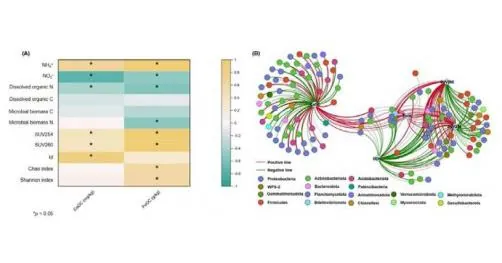
Unveiling the Hidden Power of Soil Viruses in Carbon Sequestration
2025-07-01
Author: Charlotte
Soil Viruses: The Unsung Heroes of Carbon Dynamics
In the battle against climate change, an invisible army is at work under our feet—soil viruses. A groundbreaking study reveals these microscopic entities play a crucial yet often underestimated role in carbon emissions and sequestration, enhancing the accumulation of recalcitrant carbon forms essential for storing carbon in the soil.
Soil, recognized as a key global carbon sink, contains more than double the amount of organic carbon present in all vegetation combined, alongside the atmosphere. As climate change accelerates, understanding soil's carbon dynamics becomes essential, especially the microbial processes that dictate both emissions and storage of carbon. Soil viruses, with their impact on microbial communities, may significantly influence how organic carbon is mineralized and stabilized.
New Research Breaks Ground on Viral Roles
A recent study published in the journal *Pedosphere* sheds light on the critical role soil viruses play in carbon dynamics. Collaborators from Zhejiang University in China and La Trobe University in Australia examined how these viruses impact microbial activity and soil carbon emissions, revealing intricate interactions between viral actions and carbon sequestration.
This pivotal research highlights that viruses can both stimulate and inhibit CO2 emissions from soil, depending on the complex interplay between viral lysis (the process of viruses breaking down cells) and microbial recycling. Interestingly, while viral activity produced varied carbon emissions across different soil types, it generally enhanced the retention of resistant forms of dissolved organic matter.
Viruses and Nutrient Cycling: A Dual Role
The study's findings indicate that soil viruses contribute to carbon stabilization by facilitating the binding of carbon to essential minerals like iron and calcium. Moreover, the viral processes also impact nitrogen cycling, linking carbon and nitrogen dynamics in ecosystems—a significant insight into nutrient cycling.
The researchers conducted experiments by introducing viruses into sterilized soils from various regions, including forests and croplands in China. The results showcased that viral lysis greatly altered microbial biomass and nutrient cycling, often leading to increased microbial activity and enhanced carbon storage in certain soil types.
Expert Insights on the Findings
Professor Jianming Xu, a leading soil and environmental scientist at Zhejiang University, stated, "This study is the first to illustrate how soil viruses not only affect carbon release but also stabilize it through mineral-binding processes. Our discovery presents a more intricate role for viruses within soil ecosystems that could significantly influence climate change mitigation strategies."
Implications for Climate Change Mitigation
The implications of this research are profound, offering fresh perspectives on how viruses could enhance carbon sequestration. By understanding the influence of viruses on soil health and carbon dynamics, we can develop innovative strategies for managing soil health and combating climate change.
This pioneering study underscores an urgent need for further research to explore the effects of viral processes on various soil types. Such studies could lead to groundbreaking methods to enhance soil carbon sinks in both agricultural and forest landscapes.









 Brasil (PT)
Brasil (PT)
 Canada (EN)
Canada (EN)
 Chile (ES)
Chile (ES)
 Česko (CS)
Česko (CS)
 대한민국 (KO)
대한민국 (KO)
 España (ES)
España (ES)
 France (FR)
France (FR)
 Hong Kong (EN)
Hong Kong (EN)
 Italia (IT)
Italia (IT)
 日本 (JA)
日本 (JA)
 Magyarország (HU)
Magyarország (HU)
 Norge (NO)
Norge (NO)
 Polska (PL)
Polska (PL)
 Schweiz (DE)
Schweiz (DE)
 Singapore (EN)
Singapore (EN)
 Sverige (SV)
Sverige (SV)
 Suomi (FI)
Suomi (FI)
 Türkiye (TR)
Türkiye (TR)
 الإمارات العربية المتحدة (AR)
الإمارات العربية المتحدة (AR)